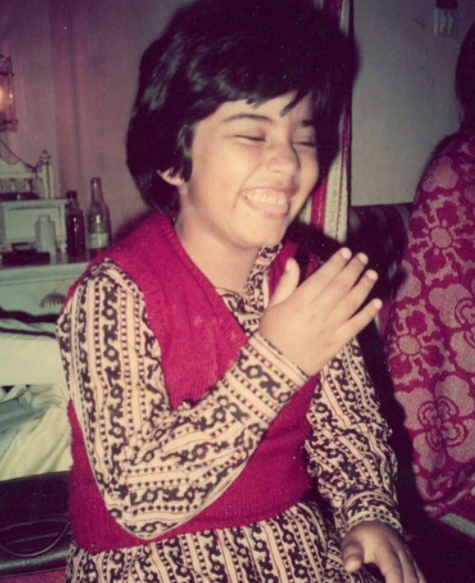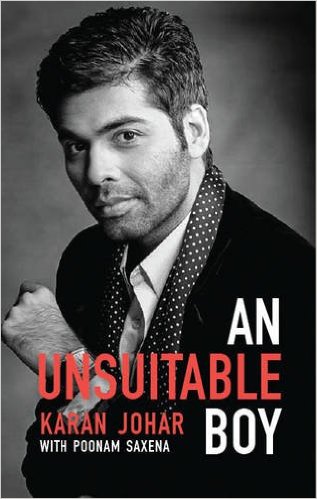In 'An Unsuitable Boy', Karan Johar Takes a Clear-Eyed Look at Himself
Filled with wit and self-deprecating humour, Karan Johar’s autobiography is about coming of age and ‘coming out’.
Karan Johar never ‘writes’ a script in the conventionally-understood way. He takes a few months to figure out the story in his head and then starts narrating them in dramatic detail to his close associates while his assistant directors (ADs) take extensive notes. During this process of narrating, enacting and note taking, the script of a Johar film emerges. His autobiography, An Unsuitable Boy, has been co-authored through a similar collaborative process. Johar spoke extensively to senior journalist Poonam Saxena, who wrote the narrative in first person. The credit for the readability of the book is due as much to Johar’s candour as to Saxena’s ability to lend the story coherence, flow and an affably intimate tone.
Scriptwriter, director, producer and show-host of Koffee with Karan, Johar has remained an ‘unsuitable boy’ for those who believe that to enjoy his films is to succumb to the undesirable seductions of big money, expensive stars, extravagant locations, high fashion, big brands and generally all things shallow. The breezy, chatty and frequently catty non-serious banter of Koffee with Karan tends to reinforce the idea that Johar is all surface and no depth. But KJo watchers know that there is more to him than meets the eye. Just as in the 1970s Shobhaa De had rewritten the rules of popular film journalism through Stardust’s ‘Neeta’s Natter’, Johar has subverted the rules of engagement on a TV chat show. Those familiar with the last two seasons of Koffee with Karan will know that primetime TV has been hopelessly sexualised and queered. That is perhaps only to be expected from someone who has flamboyantly queered Bollywood films.
The book, with some chapters more engaging than others, is about coming of age and ‘coming out’. The chapter on Johar’s childhood will have strong resonances for those who are labelled with the tag of “effeminacy". As a plump and non-masculine schoolboy, Johar is vexed but resilient while his parents are liberal, accepting and unconditionally loving. But the 'normal’ world around him is persistently judgemental about any deviation from gender normativity.
In order to ‘pass’ better, the collegiate Johar secretly attends voice-training classes where he is taught to develop a baritone and speak without feminine gesticulations. “Imagine that you’re living in a box” the instructors would say, “now make sure that your hands don’t get out of the box”. They taught him social skills, of which being masculine was one. For non-normative people, embodying the ‘normal’ and ‘natural’ is the hardest precisely because it does not come naturally. In Rituparno Ghosh’s Chitrangada, the mother of a feminine son tells her husband: “Whatever comes naturally to someone is what is natural.”
Liberalisation in the 1990s brought in its wake new urbanisms, consumer cultures and the dismantling of state monopoly over television leading thereby to the rapid proliferation of satellite TV channels. This moment also witnessed the emergence of a new Bombay cinema popularised through the term Bollywood. Both Aditya Chopra and Johar were at the heart of this phenomenon.
Johar had finished his college and was about to go to France for an internship linked to his father’s export business when, three days before he was to board the flight, his close friend Chopra persuaded him to stay back and help with the making of Dilwale Dulhaniya Le Jayenge. Chopra told him: “Why the hell don’t you realise that you were born to be in the movies? You’re overdramatic, you’re melodramatic, you’re funny. The only thing you don’t have is an interval because you have this non-stop mad energy. You’re meant for the movies.... You’ll be a filmmaker one day.” Chopra's prediction came true and Johar went onto make urban romantic melodramas that defined the contours of the Bollywood moment in the 1990s.
Johar’s debut film Kuch Kuch Hota Hai was a sensational hit that revived the fortunes of both his family and his father’s company Dharma Productions. But his second film Kabhi Khushi Kabhi Gham opened to a less enthusiastic response. Critics slammed the extravagant multi-starrer for its showy over the top-ness, cheesy jingoism and, if I may add, an audacious sense of cinematic geography where Chandni Chowk stood in close proximity to bucolic British estates.
To a despairing Johar it felt as though the gains of his first film would stand reversed but the film picked up gradually and ended up creating box office history while over taking the collections of that year’s most feted film Lagaan. Over the years, Kabhi Khushi Kabhi Gham has been Dharma's most successful film. It became, in the words of Johar, the “go-to Bollywood film” enjoying its “biggest brand value” in Germany, France and Ireland. Johar is refreshingly clear eyed about his repertoire. With wit, self-deprecating humour and the keen sensibility of a cinephile, Johar cheerfully performs autopsies of his own films.
The book is clearly meant for Bollywood buffs because phonetically reproduced Hindi lines are often left untranslated and plot points are discussed without any reference to their context in the film. The downside of addressing this 'knowing audience’ is that much of the book’s content is likely to be known to them. Yet, there is something here for everyone. In the age of proliferating digital media, celebrity biographies get written as life is lived. In adopting two children – a desire expressed in the last chapter of his book – and talking about it extensively to the media, Johar has already started authoring the sequel.
Shohini Ghosh is Sajjad Zaheer professor at the AJK Mass Communications Research Centre, Jamia Millia Islamia.
This article went live on May twenty-second, two thousand seventeen, at zero minutes past six in the evening.The Wire is now on WhatsApp. Follow our channel for sharp analysis and opinions on the latest developments.








